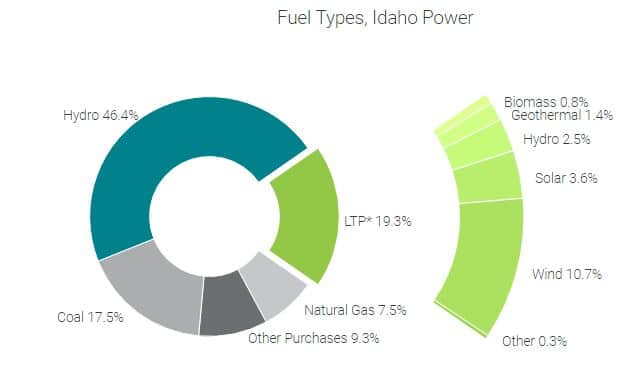In a press release yesterday, Idaho Power announced that it has signed a 20-year power purchase agreement with Jackpot Holdings for a price of $21.75/MWh. The agreement allows for Idaho Power to purchase the solar plant at a later date, as well as to obtain electricity from a proposed expansion of the facility at a later date. The electricity is described as being a replacement for a soon-to-retire coal plant in Nevada.
The utility says that it will submit the proposal to the state’s Public Utilities Commission for approval in the coming days. It is then that we will learn whether this plant includes an escalator in the pricing, much like the the Sempra Renewables 250 MW Copper Mountain Project that put in an even lower starting bid – 2.155¢/kWh.
The current publicly known lowest prices for solar PPAs are 2.375¢/kWh by 8minutenergy in Nevada and 2.49¢/kWh for a project in Arizona, as well as a project in Austin that is stated as being below 2.5¢/kWh – but without publicly releasing all the details of the contract.

Concurrent with this announcement was that Idaho Power is aiming for 100% clean electricity by 2045. The company gets more than 46% of its electricity from hydroelectric sources already, and has entered into agreements to end participation in two coal plants and is exploring exiting a third, and final, coal plant.
Six years ago, more than 40% of the utility’s electricity came from coal.
One theory for how a group in a region with a lower solar irradiation value can set a record low price versus the likes of 8minutenergy and NextEra in Nevada, was hinted at in a recent pv magazine USA interview with 8minutenergy and the Idaho Power press release.
The project is being installed in a location with an existing transmission line that today is delivering electricity from the aforementioned closing coal fired plant in Nevada. Additionally, it was noted that the solar power plant could be expanded in the future, with Idaho Power having an option to purchase that electricity at a higher price. This suggests transmission or substation upgrades will be necessary to expand the facility
In the interview noted above, 8minutenergy President & CEO Tom Buttgenbach said:
There is no low hanging fruit anymore. Plenty of substations had space, that’s not true today. Today you have to accept quite a bit higher costs in order to interconnect to the grid. It’s very hard to find good, and inexpensive land close to those substations.
Well, maybe Idaho Power and the hard working developers of Jackpot Holdings found that diamond in the rough. And it probably also means, with retiring coal plants across the nation – there will be significant viable electricity infrastructure interconnections that we can connect to. Meaning record low pricing might not be done in the United States just yet.
This content is protected by copyright and may not be reused. If you want to cooperate with us and would like to reuse some of our content, please contact: editors@pv-magazine.com.








Wow, going from more than 40% coal to 17.5% in 6 years is pretty impressive. Hope they can get that last coal generator closed.
BTW, according to the EIA U.S. coal generated electricity dropped 15% in January and nearly went under 100TWh during the month (101TWh vs 118.9TWh in Jan 2018).
Observation:
This solar plant will generate power during the six mid daylight hours, right? 10 AM to 4 PM.
Was the coal plant producing power during daylight hours only?
If it was generating power during the remaining 18 hours and is shut down, where
will that power come from and at what cost?
As the state has significantly shifted from coal to gas and hydroelectric, it is probable that the 24-7 portion of coal will be replaced by hydro+gas, and that the daytime coal that the solar replaced – we gotta do a deeper analysis. Was it part of the other coal plants that also shut down? Is it the flexible gas that is 1/2 as dirty as cheaper? Is it hydro? And is the hydro water limited or generator size limited? If water, and hydro output can be controlled – then its a great relationship. Really gotta get into a conversation with the utility manager to answer that question well.
The utility did state this was the lowest cost opportunity. So whatever the solar replaced, the old stuff is more expensive.